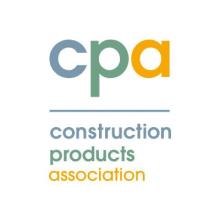The Construction Products Association (CPA) has lowered its forecasts for construction output growth in 2020 and 2021.
The association's autumn forecasts have been downgraded from 1.0% (for 2020) and 1.4% (for 2021) to 0.5% and 0.9% respectively from its summer forecasts.
The CPA - which represents UK manufacturers and distributors of construction products and materials - says the downgrade reflects uncertainty around Brexit and major infrastructure delivery. The uncertainty most notably centres around delays and cost overruns with Hinkley Point C and the Review into HS2. It adds that slowing house price growth and Brexit uncertainty impacting investment in the commercial sector have also contributed to this more pessimistic projection.
The CPA’s forecasts – one of the industry’s most respected views on the outlook for construction activity – point to the Oakervee Review into HS2, one of the world’s largest infrastructure projects, as the key factor now delaying main works beyond the forecast period.
According to the CPA, the Review could change the scope of work on a project that is already warned to be more than £20bn over budget with delays of between five and seven years, perpetuating the uncertainty linked to infrastructure construction and delivery. Hinkley Point C, another significant contributor of growth in the infrastructure sector, has also confirmed delays and cost increases for the construction of its nuclear reactors. Meanwhile, the CPA says Brexit uncertainty is impacting on confidence in the commercial sector with a reluctance to invest in new offices until the UK’s relationship with Europe is made clearer and improves the outlook for long-term investment returns.
In the private housing sector, starts are forecast to fall 2.0% this year given slowing house price growth and weaker demand in southern regions of the country, before returning to growth in 2020 as the economy settles and underlying demand for new build house purchases is enabled by Help to Buy. The public housing sector’s prospects are more positive due to grant funding on the Shared Ownership and Affordable Homes Programme, although there are signs of vulnerability as housing association development is increasingly linked to the slowdown in the general housing market.
Despite delays on major projects, there are some pockets of growth in infrastructure, with offshore wind projects receiving significant investment in activity. Large offshore wind farm projects underway or starting soon each reach over £1bn in value. Combined with a fall in the strike price government pays for wind-generated energy to around a third cheaper than energy generated at Hinkley Point C, there’s further reason for optimism within offshore wind and an indication that renewable energy is gaining a competitive market edge.
An equally more positive outlook can be found in warehouses, which is a sub-sector forecast to increase by 15% in 2019 and 20% in 2020. Owing to the development of automated warehouses by online retailers which use higher-tech operations in logistics, the scale and value of projects have increased. The CPA says that growth in the sector is no doubt amplified by moves away from the high street, where retailers have been hit by higher business rates and rising wage costs.
CPA economics director Noble Francis commented: “Construction activity is expected to grow by only 0.5% during 2020, even assuming a smooth Brexit involving a deal or, more likely, another extension to Article 50. The uncertainty created over when and how the UK will leave the EU has affected new investment in parts of private housing and commercial, the two largest construction sectors. Add to this growing concerns about the government’s major project delivery and the next two years are expected to be challenging in spite of a raft of infrastructure projects in the pipeline and a strong latent demand for housing."
Francis added that private housing starts are expected to fall by 2.0% this year before rising by 1.0% as falls in house building in London, the South East and East are expected to be offset by growth in the North West, Yorkshire and the Midlands.
He said it is “certainly not all bad news” however, as infrastructure is forecast to rise by 11.2% this year and 3.7% in 2020 in spite of poor delivery of major projects.
"If government were able to improve its delivery of major infrastructure then this could drive strong increases in construction activity as well as boosting UK economic growth and productivity," he said.








